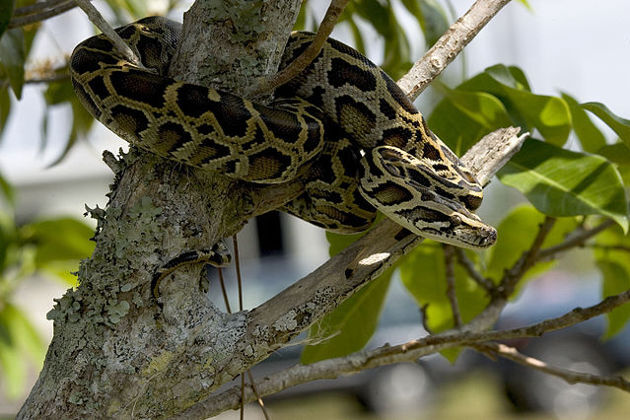Move FM Global News

Florida Everglades python crisis spurs high-tech rabbit decoys
Oct 3, 2025WEST PALM BEACH, Florida: The South Florida Water Management District has launched an unusual experiment to combat one of the region’s most destructive invasive species—the Burmese python. Their new weapon: robot rabbits.
Designed to look, move, and even smell like the native marsh rabbits that once thrived in the Everglades, these decoys are meant to trick the giant snakes into revealing themselves. Officials say Burmese pythons have devastated local wildlife, wiping out up to 95 percent of small mammals and significantly reducing bird populations in Everglades National Park.
“Removing them is fairly simple. It’s detection. We’re having a really hard time finding them,” explained Mike Kirkland, the district’s lead invasive animal biologist. Camouflaged in the swamp’s dense vegetation, the snakes are notoriously elusive.
This summer, researchers from the district and the University of Florida deployed 120 robot rabbits as part of the pilot project. The devices are retrofitted toy bunnies equipped with heat emitters, scent dispensers, and subtle movement mechanisms to mimic a real rabbit. Powered by solar energy, they can be switched on remotely. Each is placed in a small pen monitored by cameras, which alert officials when a python approaches. Contractors are then dispatched to capture and remove the snake.
At roughly US$4,000 each, the robotic lures are expensive but considered more practical than earlier efforts involving live rabbits, which proved too costly and labor-intensive.
The stakes are high. Pythons, which likely spread through escapes and pet releases, are now firmly established in Florida’s subtropical wetlands. A single female can lay 50 to 100 eggs at a time. Estimates of the total population vary widely—from “tens of thousands,” according to the U.S. Geological Survey, to as many as 300,000. With few natural predators, except for occasional clashes with alligators and egg predation by bobcats or coyotes, the snakes have flourished.
Since 2000, more than 23,000 pythons have been removed from the wild, according to the Florida Fish and Wildlife Conservation Commission. Annual events such as the “Florida Python Challenge” also encourage public participation; this year, 934 hunters from 30 states captured 294 snakes, with a top prize of $10,000 awarded to the participant who removed 60.
Still, officials stress that every snake caught makes a difference. “Every invasive python that is removed makes a difference for Florida’s environment and its native wildlife,” said Ron Bergeron, a member of the water district’s governing board.
The robot rabbit project is still in its early stages, but Kirkland is optimistic. “This part of the project is in its infancy,” he said. “We are confident that this will work once we are given enough time to work out some of these details.”


